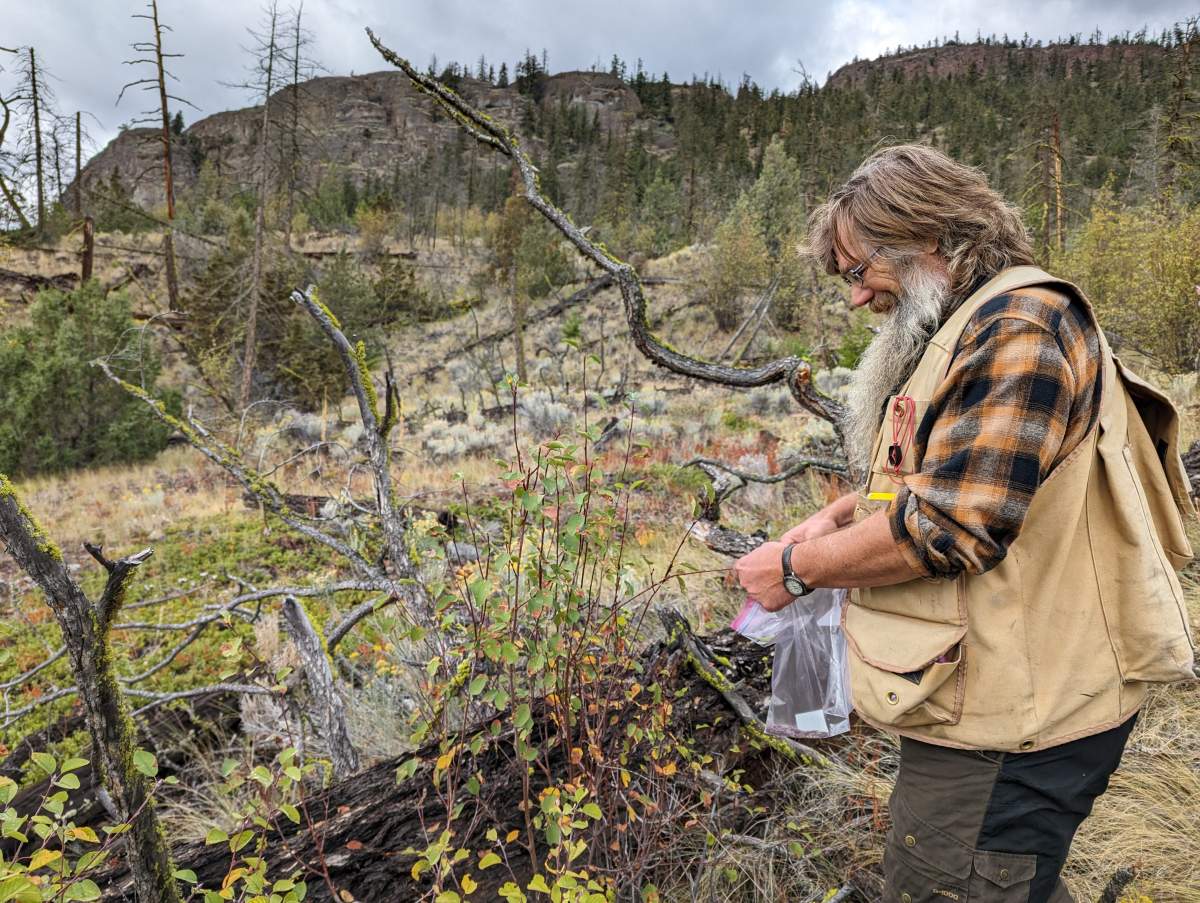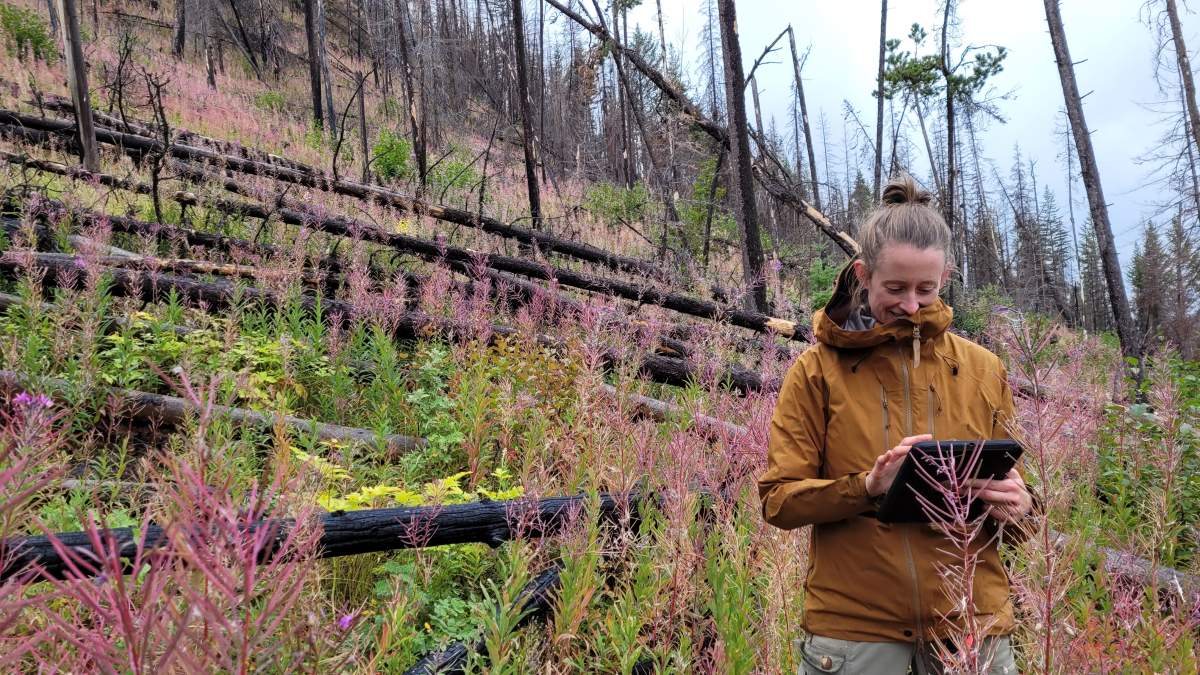Looking for more Indigenous news? Find our stories here.

After British Columbia’s worst wildfire season, wildlife needs time to recover. And researchers have found proof of that in the poop of mule deer.
“In Skeetchestn Secwepemc territory, we have nothing left to burn,” said Shaun Freeman, wildlife and habitat biologist with Skeetchestn Natural Resources.
“The impacts to habitat from Elephant Hill, Sparks Lake and Tremont Creek fires have been extensive and when you compound that with industrial development, recreation, agriculture, etc., we really are in a recovery mode.”
Skeetchestn is investigating wildlife recovery and ecosystem restoration across the territory through, in part, the poop of mule deer.
They’ve chosen mule deer because of its importance to Skeetchestn people and presence across the territory.
“It’s traditionally very important for the diet and social connection as well as it’s well dispersed throughout the territory,” Freeman said. “Basically, deer use the entire territory from low elevation in winter right up into high elevation in summer and spring.”
Mule deer have a learned home range and don’t have the ability to adapt, so when the winter area they frequent no longer functions because it’s charcoal, it has a massive impact on the species, Freeman explained.

Get daily National news
Mule deer need to put on enough fat during the summer to survive the winter. So when they’re not able to put on that fat – because of wildfires or other disturbances – it becomes difficult for them to survive.
A lot of the research done by Skeetchestn is out in the field. They’ve set up permanent monitoring locations in burned areas and find similar non-burned areas to compare so they can track parallels over time.
“What that looks like is walking up and down, looking at the ground, identifying all these little plants that are coming up, taking some clippings to send off to the lab, collecting pellets, deer poop to also send off for analysis,” said Sarah Dickson-Hoyle, a postdoctoral fellow at the University of British Columbia and Mitacs intern.
“A lot of it’s getting down in the dirt, getting our hands dirty and really getting that first-hand understanding over time of how these landscapes are changing.”

And one way they’re getting their hands dirty is through “poop picking.”
Freeman said what they’re looking for is concentrations of fecal cortisol, which is an indicator of stress, and the metabolism of stress hormones shows up in deer pellets.
“We can successfully evaluate the concentration of fecal cortisol in deer – the Toronto Zoo has some great scientists that are helping us with the analysis – and we use that with the belief that, OK, if we can track stress, that’s going to tell us a lot about how the ecosystem is functioning,” Freeman said.
“We can learn what is potentially happening out in the environment, whether it be a catastrophic ecological situation, or whether it’s more associated with something like in a music festival, increase in development, increase in vehicle traffic, etc.”
What they’ve learned through “poop picking” is that wildlife needs time to heal without the presence of humans and they’ve organized community-run territorial patrols to share that message.
“We took the onus upon us because it’s protecting our lands to make sure that we do our bit and educate the public,” Freeman said.
“We’re out there, we were out there last year too, right through hunting season, during the mushroom picking season … and again this year.”
With the patrols, they’ll be handing out information packets that will let people know local regulations, where the closed areas are and why Skeetchestn is concerned.
Those out patrolling have been trained by SNRC staff and B.C. conservation officers.
“We’ve had another big fire season but when the fires are out and the smoke dies away, often that attention turns away,” Dickson-Hoyle said.
“But for communities and governments that are working in these landscapes, that’s when the work really begins and when the impacts can really ramp up.”
Freeman adds, “We’re really trying to let the public know, look, just because the fire’s gone, doesn’t mean this isn’t still a sensitive landscape and doesn’t mean that we don’t need to be mindful of continued impacts on wildlife.
“Just because access is opened up, it’s not necessarily appropriate to be coming back into these areas.”










Comments